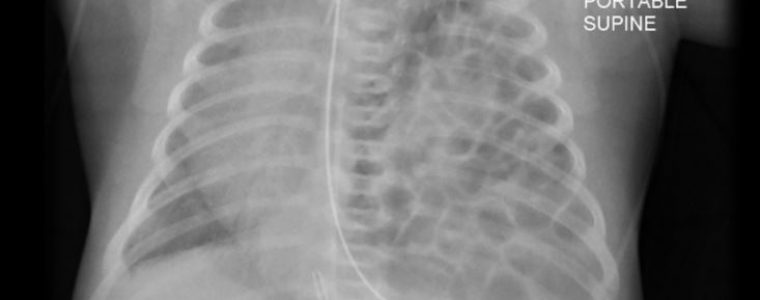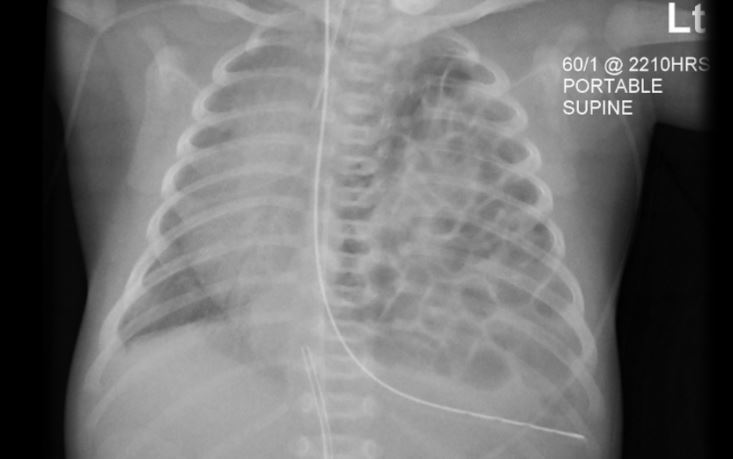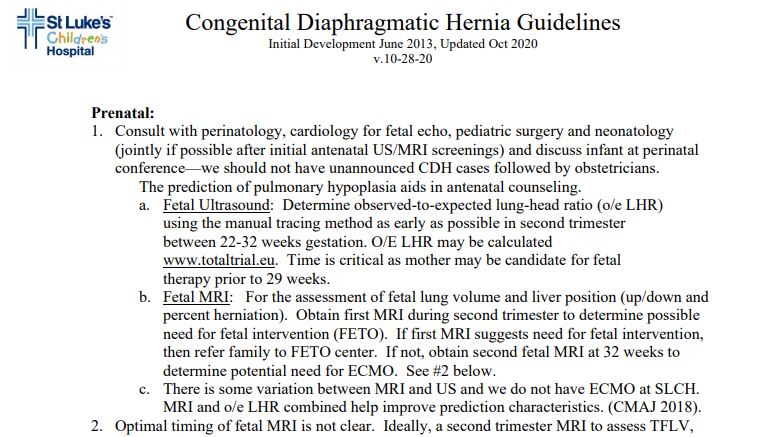CLINICAL GUIDELINES |
Respiratory
Purpose:
A comprehensive guideline which covers prenatal risk assessment, delivery room management, and NICU care goals.

The guidelines include a multiphased approach encompassing stabilization, escalation, maintenance, surgical repair, and follow up. Failure criteria are also included to provide potential thresholds for transport from this non-ECMO site.
Population:
All infants with prenatally or postnatally diagnosed congenital diaphragmatic hernia
Purpose:
A comprehensive guideline which covers prenatal risk assessment, delivery room management, and NICU care goals. The guidelines include a multiphased approach encompassing stabilization, escalation, maintenance, surgical repair, and follow up. Failure criteria are also included to provide potential thresholds for transport from this non-ECMO site.
Population:
All infants with prenatally or postnatally diagnosed congenital diaphragmatic hernia

St. Luke’s Children’s Hospital, 190 E Bannock St. Boise, ID 83712
Declan O’Riordan, MD, oriordd@slhs.org

Dedicated to providing a single-source home for resources on career planning, practice development, and clinical guidelines for neonatologists.
Copyright 2024 © Neonatology Solutions, LLC. All rights reserved.
Disclaimer: All content above is solely the work product of the authors. Neonatology Solutions, LLC, makes no endorsement or statement of safety, efficacy, or appropriateness of any of the protocols, pathways, guidelines, or algorithms contained within. They should be thoroughly reviewed against any available evidence prior to adoption. This content is for informational purposes only and should not be construed or relied upon as a standard of care. Any questions or concerns should be directed to the authors and/or the listed contact person. Good clinical judgement should always prevail when applying any standardized approach. We recommend that institutions review these protocols, pathways, guidelines, and algorithms and accept, modify, or reject them based on their own institutional resources and patient populations. Neonatology Solutions, LLC, assumes no liability for any outcomes arising from use of these tools.
Disclaimer: All content above is solely the work product of the authors. Neonatology Solutions, LLC, makes no endorsement or statement of safety, efficacy, or appropriateness of any of the protocols, pathways, guidelines, or algorithms contained within. They should be thoroughly reviewed against any available evidence prior to adoption. This content is for informational purposes only and should not be construed or relied upon as a standard of care. Any questions or concerns should be directed to the authors and/or the listed contact person. Good clinical judgement should always prevail when applying any standardized approach. We recommend that institutions review these protocols, pathways, guidelines, and algorithms and accept, modify, or reject them based on their own institutional resources and patient populations. Neonatology Solutions, LLC, assumes no liability for any outcomes arising from use of these tools.